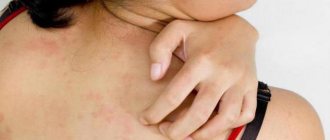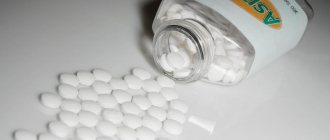Allergy – what is it?
Before you start fighting the disease, you should understand what it is. The term “allergy” means an inadequate response of the human body’s immune system to the influence of any substance. The latter are usually called allergens. Allergy symptoms vary depending on the type of illness.
It is impossible to completely overcome allergies. To alleviate the condition, patients must regularly take antihistamines. The list of such medications is quite wide. There are currently four generations of drugs available on the market that can block the action of free histamine. The drugs differ in the number of side effects, the duration of the effect, and the presence of sedative properties.
Types of beer and reactions to them
- Live beer. Its peculiarity is that it is not filtered or pasteurized. Consists of three components: hops, malt and brewer's yeast. It is called alive because fermentation occurs in it all the time. The consumer may receive a body reaction in the form of an allergy if he previously had signs of seasonal allergies during the flowering of cereal crops. In this case, preservatives and additives can be excluded from the list of allergens, because they are not included in the composition. You need to be careful when purchasing a drink. Its shelf life should not exceed a couple of days. Anything that is stored longer cannot be classified as “live beer”. This beer will already contain preservatives.
- Nonalcoholic beer. Production technologies include the use of a different type of yeast, as well as the use of low temperatures. The manufacturer’s task in this case is to stop the fermentation procedure so that the maltose does not turn into alcohol. In non-alcoholic beer, yeast can act as an allergen, as well as various additives and substances that allow the drink to be stored for a long time.
- Beer on tap. If you compare it with beer from a bottle, there are practically no differences. Like bottled beer, draft beer differs in composition, recipe, and the presence of food additives. When a person gets an allergy from this type of beer, the first thing to do is find out the ingredients. After all, there will definitely be an allergen among them.
- Wheat beer. It contains wheat malt. It is this that can cause allergic manifestations. The risk of allergies increases if a person suffers from seasonal allergies. In this case, the phenomenon of cross-reaction appears.
- Dark beer. In this type of beer, the malt is roasted and undergoes additional processing. This drink is high in hops. Allergies can occur to hops or malt.
- Gluten free beer. Other cereal crops are used in its production. For example, rice or corn. As it becomes more and more popular, manufacturers are trying to improve the recipe and produce even more of it. Another feature is that gluten residues are removed from the finished beer. If these rules are followed, the risk of allergies is minimal. Only if a person is hypersensitive to substances in the drink.
- Expired drink. Drinking beer that has expired will result in poisoning. This is not an allergic manifestation.
Causes of beer allergy
Fans of intoxicating drinks should be on their guard. Cases of allergic reactions after drinking beer are increasingly being recorded. Such a pathological phenomenon can be provoked by one or several components included in the drink:
- Hops are one of the main ingredients of the foamy drink, which gives it a slight bitterness. The strongest allergen is myrcene, a substance contained in the essential oil of the plant.
- Malt is another important product that is made by soaking barley grains. If you have an allergy to grains or pollen, you may well develop an allergy to beer.
- Yeast is a necessary component for fermentation of the product. You should not drink beer if you are intolerant to yeast in food.
Nowadays, finding natural beer is quite difficult. Most manufacturers add ingredients that are harmful to health: dyes, flavors, and flavor enhancers. It is these components that can trigger an allergic reaction.
How much beer can you drink per day without causing harm to your body? It all depends on the health status and naturalness of the product. Doctors recommend limiting yourself to 1 liter of beer per day, provided that the person does not have problems with the cardiovascular and digestive systems. But it’s still better to reduce this amount of low-alcohol drink by half and limit yourself to a glass of good quality beer a day.
What causes the reaction
The cause of an allergy to beer can be individual intolerance to the ingredients in its composition and the brewing technology itself - after all, beer comes in many varieties. For example, the same person’s reaction to a filtered and unfiltered drink may be different - one type will show allergy symptoms, while the other will not have any unwanted reactions.

The main components of the drink are barley, hops and yeast:
- barley is used in the form of malt - these are sprouted seeds, but sometimes boiled with rice, rye, wheat or corn;
- hops are added in the form of cones at the end of the brewing process, it gives the drink aroma;
- yeast is responsible for strength - a proper drink should have a strength of no more than 5.5%, and anything stronger is a surrogate.
If a person cannot tolerate at least one of the ingredients, then the drink itself will be an allergen for him. And if you also have intolerance to cereal pollen, the reaction will be stronger.
The bottled and canned product (it has a long shelf life) contains flavoring additives and preservatives that are undesirable for a person prone to allergies to consume.
Some people are intolerant to gluten (gluten), which is found in barley, rye and wheat seeds. This means he can’t drink the drink either.
Problems may arise when drinking a certain type of drink:
- unfiltered (live) - it is not further processed (it is not filtered, pasteurized or preservatives are added), which increases the impact of allergens;
- non-alcoholic - to stop the fermentation process, special brewer's yeast is used, which prevents the alcoholic fermentation of maltose; this yeast is an allergen;
- dark - to obtain this variety, malt is sprouted longer and roasted, more hop cones are added, contraindicated components may be hops or the protein contained in the grain that has changed its properties during the roasting process;
- gluten-free - it is cooked from rice and corn grains; if a person cannot eat these grains, he should not drink this variety.
Manifestations similar to intolerance to the drink can arise from drinking it out of date - gastrointestinal upset, headache, and increased body temperature. This does not mean that a person is intolerant to the components, you just need to monitor the expiration date and store the product correctly.
But can a child be allergic to beer components? Oddly enough, yes. This can happen to a breastfed baby if his mother drank even a little beer, since all the substances from the food eaten by the nursing woman enter breast milk.
In infants under one year of age, immunity is not fully formed, so even if the child does not have a tendency to allergies, and the components of the foamy drink and ethanol enter his blood, this can affect the functioning of his heart, digestive system and have a negative impact on the central nervous system.
Beer allergy: symptoms
Signs of intolerance to a foamy drink appear depending on the type of allergen. In this case, the disease manifests itself quite quickly. An allergy to barley malt is manifested by symptoms such as cough, difficulty breathing, and a feeling of heaviness in the chest area. The face may become covered with red spots, and a tingling sensation may appear. Swelling occurs in the lips and under the eyes.

With intolerance to hops, tearing, burning in the eyes, and swelling of the eyelids appear. The nasal mucosa is also severely affected and allergic rhinitis occurs. In extremely severe cases, an attack of suffocation may begin.
Allergies to yeast manifest themselves in almost the same way as to other components of beer. In addition, nausea, vomiting, digestive tract upset, and abdominal pain may occur.
How does drinking beer affect your skin?
Beer affects the skin in different ways. In the vast majority of cases, oral consumption has a negative effect (pimples and other defects appear on the face); local application, on the contrary, is actively used in cosmetology to restore youth and beauty.

Excessive consumption of salt drink causes the following reactions in the body:
- Skin problems in general. The coarsening of the dermis, combined with enlarged pores, makes the face extremely unattractive. The next stage is where wrinkles appear: the skin around the eyes is the first to suffer, followed by the forehead and nasolabial area, and the neck is the last to be affected. The skin tone becomes feverish red or unhealthy gray. The final chord is rosacea and pigmentation, giving the appearance an unkempt appearance;
- Increased swelling. This is a faithful companion to the love of beer. It stays in the body for a long time, dries out the face, turning it flabby, which accelerates the appearance of wrinkles. Imperfection is expressed in the form of bags under the eyes or swelling. The defect is especially typical for those who like to drink at night;
- Loss of facial oval. From beer, the clarity of the contour is lost, the skin of the cheeks and jaw sags. Visually, this effect ages a person by several years. It is extremely difficult to restore a clear oval;
- Pronounced wrinkles. Nasolabial folds, crow's feet around the eyes, and a flabby neck appear in beer fans by the age of 30-40, although normally such defects may appear closer to 60;
- "Panda eyes" The effect that gives a resemblance to a cute animal does not make a person beautiful at all. Characterized by dark circles, swollen lower eyelids, and general sagging around the eyes. The organs of vision themselves become watery and red. All together creates a picture of a tired or sick person;
- Change in nose color. An unhealthy addiction to beer disrupts the functioning of blood vessels, as a result of which the skin on the nose acquires a red tint, and the organ itself becomes fleshy and shapeless;
- Lip deformation. Beer leads to swollen lips, constant swelling and an unhealthy color.
Using beer externally, on the contrary, gives many positive effects. This is due to the composition, which contains:
- Hops, which regulates the production of skin secretions;
- Yeast containing B vitamins, which have a positive effect on the dermis;
- Organic acids that cleanse pores and reduce the number of age spots;
- Vitamin C, which reduces exposure to ultraviolet radiation and air pollution;
- Amino acids that activate the natural production of elastin and collagen;
- Polyphenols with antioxidant properties.
Given the presence of these components, adding beer to home cosmetics helps:
- Rejuvenate;
- Heal damage;
- Saturate the dermis with moisture;
- Get rid of increased greasiness;
- Cope with acne elements (pimples and others).
Allergy to alcohol
Beer allergies often develop in people who are intolerant to stronger alcoholic beverages. The reason for this is ethanol. Despite the fact that the body independently produces a small amount of this substance, similar pathological phenomena are still encountered in medical practice. How does an allergy to alcohol manifest itself? First of all, red spots on the face, itching, and swelling appear.
An asthma attack, loss of consciousness, increased blood pressure and body temperature are extremely rare. A similar condition may be a consequence of a lack in the body of the enzyme responsible for processing ethanol - aldehyde dehydrogenase.
Could it be?
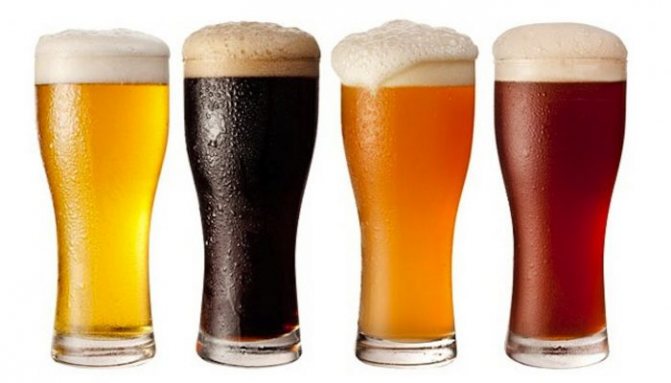
The list of allergens (substances that can cause an allergic reaction) is very large and can stretch on many pages. Among the foods that can cause unwanted intolerance reactions are alcoholic beverages. Therefore, an allergy to beer is quite possible. But it is not the beer itself as a product that causes unpleasant symptoms, but its various components:
- Malt. It is one of the most important components of beer, which is produced from barley (a type of cereal). It is highly likely to be an allergy trigger. The beer may also contain wheat, rye or corn malt. Sometimes other components are used to ferment the drink.
- Hop.
- Yeast. Of course, there is not much of this component present in the finished product, but it can also cause allergies.
- All kinds of additives. So, allergies quite often appear to sulfites. These substances are used in beer production to limit fermentation processes or to achieve a preservative effect.
It is worth considering that an allergic reaction that occurs after drinking a foamy drink can be triggered by its combination with some kind of snack.
How to overcome the disease?
If an inadequate reaction of the immune system to a beer drink is detected, you should stop drinking it and seek help from an allergist. Only this method guarantees the complete elimination of the appearance of signs of a dangerous disease.
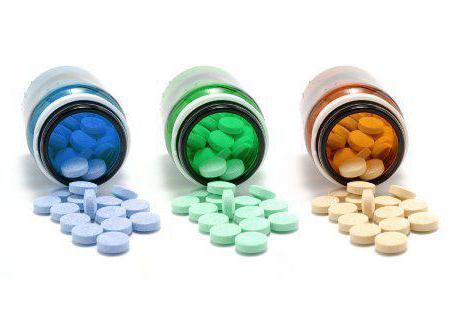
It will not be possible to completely get rid of the symptoms of the pathology if contact with the allergen is inevitable and it is difficult for a person to completely eliminate the consumption of their favorite drink. Treatment will only help to significantly reduce the severity of symptoms or even completely prevent their occurrence for a certain time.
If you are allergic to beer, you should know what generations of antihistamines are available that can significantly reduce the symptoms of the disease. It should be borne in mind that alcohol, including beer, is completely incompatible with allergy medications.
Why do beer acne appear on the face?
According to dermatologists, acne from beer on the face is not the most common occurrence, but there is a category of patients who react acutely to an intoxicating drink and suffer not only from a hangover, but also from heavy rashes.
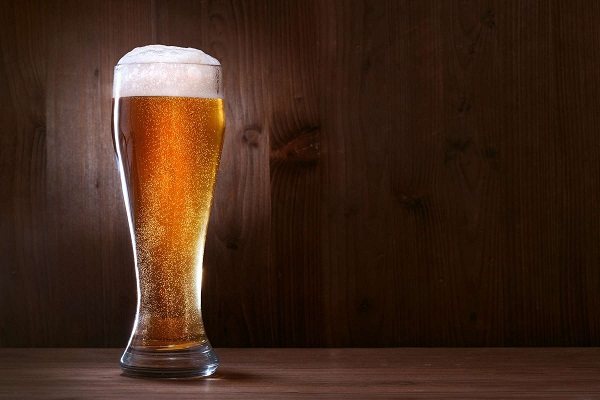
The relationship between inflamed acne and beer is most often indirect. Potentially dangerous properties of beer in terms of acne include:
- Deterioration of natural immune defense. The result is the body's inability to resist acne-causing bacteria;
- Dehydration. A significant amount of beer leads to frequent urination, which in turn causes a lack of moisture in the body. The result is drying of the skin and active secretion production to restore balance. Increased sebum production provokes the formation of acne;
- Pathologies of the intestinal tract. An intoxicating drink often promotes diarrhea, which causes the body to lose a significant amount of vitamins and nutrients. Their deficiency leads to the formation of acne;
- Microtoxins. When consuming beer made from grains affected by mold fungi, the entire body suffers, and one of the manifestations is the transformation of clear skin into problem skin;
- Hormonal imbalance. Beer, especially in combination with excessive consumption of other alcohol, disrupts the ratio of estrogen and testosterone. This factor is a common cause of acne development.
Almost instantly, beer causes acne in people with an imbalance of carbohydrates. The drink increases the already excessive content of substances, which is immediately reflected in the appearance of acne and inflammation.
To eliminate beer acne, it is important to completely eliminate alcohol from your diet and start taking medications that remove toxins. Local treatment without these measures will not give a full result.
Antihistamines: list
Medicines that block histamine receptors must be on hand if you are allergic to a foamy drink. This drug is selected on an individual basis. The specialist takes into account the severity of the patient’s condition, tolerability of the drug components and the presence of concomitant pathologies.
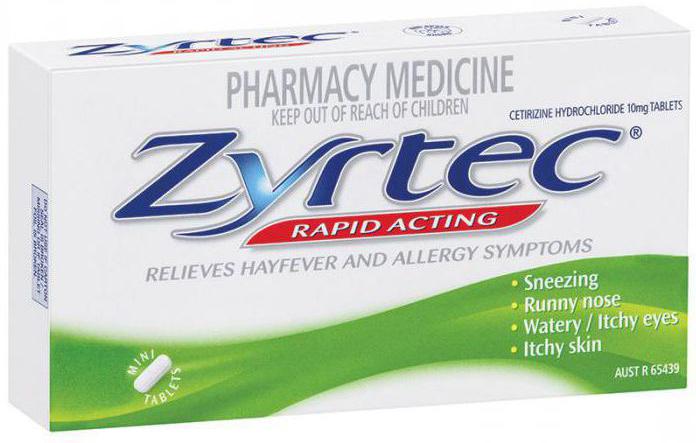
All generations of antihistamines have approximately the same effects:
- reduce increased capillary permeability;
- prevent tissue swelling;
- alleviate the patient's condition;
- relieve spasm of smooth muscles;
- reduce the hypotensive effect of histamine.
First and second generation drugs differ from newer ones in that they often cause side effects such as drowsiness. Antihistamine medications of the 3rd and 4th generation are practically free of such disadvantages and are suitable for absolutely all patients.
The most effective drugs for treating allergies include:
- "Suprastin";
- "Diazolin";
- "Claritin";
- "Zyrtec";
- "Allegra" (Telfast);
- "Cetrin";
- "Levocyterizin";
- "Erius";
- "Rupatadin";
- "Zodak".
Dangerous symptoms

Drinking beer if you are allergic to some of its components may result in the development of severe allergic reactions, which, in the absence of immediate medical assistance, can lead to death. You can suspect something is wrong by:
- Difficulty in breathing, shortness of breath, blue mucous membranes and hoarseness of the voice. Often these symptoms are accompanied by a cough. The listed signs indicate acute laryngeal edema.
- Enlargement (swelling) of certain parts of the body. It is dangerous if the swelling affects the oral cavity and larynx - suffocation may occur. This is how Quincke's edema manifests itself.
- Redness of the skin, which is replaced by severe pallor, increased breathing and pulse, breathing problems and bluish skin in the area of the nasolabial triangle. Such symptoms may be supplemented by the appearance of a small rash, swelling of the face and neck. The patient may feel fear and anxiety, his consciousness may become foggy, and a sticky cold sweat often appears on the skin. In this case, we are talking about the development of dangerous anaphylactic shock.
If the described symptoms appear, it is very important to immediately provide first aid to the victim and call an ambulance. Delay is life-threatening.
"Cetrin" for beer allergies
The main active component of the medicine is the substance cyterizine. The drug has a rapid effect and eliminates allergy symptoms within half an hour after administration. "Cetrin" is produced in three forms: drops, syrup, tablets.
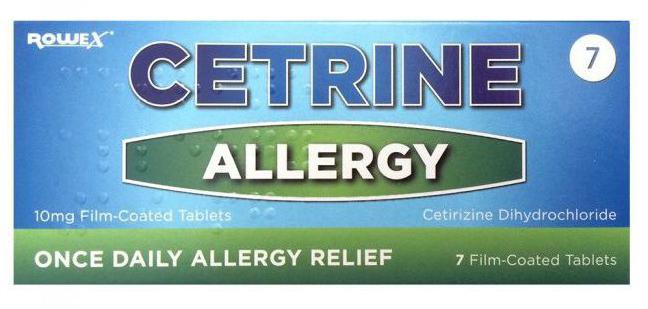
Beer allergies respond well to treatment with this drug. To eliminate the symptoms (tearing, itching, urticaria, dermatitis) of the disease, you should take 1 Cetrina tablet per day. The dose can be divided into two doses. The daily dose is adjusted if the patient has liver and kidney disease.
Symptoms of an allergic reaction
Manifestations may vary. But, often, the skin of a person suffers (primarily the arms and upper torso).

- local redness that itches;
- rashes in the form of small red blisters.
In severe cases, the face and eyes swell. Symptoms manifest themselves in different ways, but their active manifestation occurs in the first two hours after drinking beer. A person may experience involuntary tears, a runny nose, or a cough.
You should be wary of the most acute reactions of the body, which include:
- Quincke's edema;
- anaphylactic shock.
In these situations, you need to act immediately by seeking medical help. Because due to swelling of the tongue, a person may suffocate. Edema develops rapidly, so help must be provided quickly.
Allergies in children and pregnant women
Everyone knows that alcoholic beverages cannot be consumed if you are under 18 years of age. If such a case occurs, then the allergic manifestations will be the same as in an adult.
During pregnancy and breastfeeding, some mothers allow themselves small amounts of beer. This is strictly prohibited, as it negatively affects the course of pregnancy and the unborn child. Drinking even low-alcohol drinks can lead to pregnancy loss. Children whose mothers indulged in alcoholic beverages during pregnancy are at risk of developing cardiovascular diseases.
During lactation, alcohol should also be avoided. It affects the child’s nervous and cardiovascular systems. An infant may develop alcohol dependence. It forms very quickly, but it is very difficult to get out of it.
When it comes to allergies, this is a harsh reality. An infant may develop a food allergy if the mother drinks beer. And since his body is just forming, he endures the consequences more severely than an adult.
Doctors strongly advise you to give up alcohol during pregnancy and lactation.
Urticaria from alcohol: mechanism of development, signs and treatment of allergy to alcohol
The appearance of itchy rashes on the skin after drinking alcohol is a sign of alcoholic urticaria.
The problem arises when the body reacts incorrectly to some component of the drink, a combination of alcohol with certain medications, or congenital intolerance to alcohol.
The disease is not contagious and relates to individual characteristics. In some cases, the symptoms of the pathology threaten a person’s life, and the victim requires emergency assistance.
The mechanism of alcohol allergy
Urticaria is a disease of an allergic nature that occurs when there is hypersensitivity to a certain substance - an allergen. Alcoholic drinks often cause problems.
Ethyl alcohol is not allergenic, even has a weak antihistamine effect, but can spur a negative reaction. Urticaria from alcohol develops due to the consumption of drinks with yeast, sulfites, synthetic additives and plant components (wheat, rice, barley, corn, hops). It is to the additives, as well as to the breakdown products of alcohol, that the reaction appears.
Most often, allergies are caused by beer and wine, but there is practically no reaction to pure vodka. Sometimes the pathology manifests itself due to the consumption of alcoholic desserts, kebabs with wine marinade, and medicinal alcohol syrups.
The disease has 2 forms:
- acute - it occurs only once and does not return;
- chronic - this form is incurable, develops over years and systematically manifests itself with characteristic symptoms.
Important! Signs of allergic urticaria intensify when liver function is impaired and concomitant diseases of the digestive system and when alcohol is combined with highly allergenic foods - fish, citrus fruits, strawberries, chocolate.
Congenital alcohol intolerance
Hives that occur after drinking alcohol are a common reaction to the components of drinks or snacks that accompany libations. In such a situation, drinking alcohol is allowed, but allergens should be avoided.
Much less common is congenital intolerance to alcohol, when the body is not able to process alcohol - in this case, you will have to completely stop drinking alcohol.
Allergy symptoms after alcohol
Signs of pathology:
- rashes in the form of red blisters resembling a burn - most often they appear on the face, neck, chest, arms;
- swelling, itching and irritation of the skin;
- nasal congestion;
- blood pressure surges;
- increased heart rate;
- headache;
- heartburn and indigestion;
- nausea and vomiting;
- temperature increase;
- lethargy and loss of strength;
- rarely – difficulty breathing, even suffocation.
In the photo, itchy red rashes - the main sign of alcoholic urticaria - look like nettle burns. Symptoms of the problem appear both during the feast and after 1-3 hours - this depends on the efficiency of the liver. As toxins are released, the symptoms usually subside and disappear after 1-3 days.
Patients do not always associate skin irritation and blisters with alcohol consumption. Therefore, by the time the rashes become permanent, liver function is significantly reduced and toxins accumulate in the body.
Thorough examination
The manifestation of an allergy to alcohol is a signal that you need to visit a specialist for diagnosis. During the examination, doctors will perform all the necessary tests and find out whether the patient has any problems in the functioning of internal organs (intestines, liver) that can cause unpleasant symptoms.
Important! If alcoholic urticaria affects large areas of the skin and is accompanied by dizziness, weakness and swelling, a visit to the doctor is required.
Treatment
In all cases of signs of alcoholic urticaria, it is recommended to seek medical help. This will allow you to quickly get rid of symptoms and prevent relapses of the disease.
The method of treatment will depend on the characteristics of the disease:
- For individual intolerance to alcohol, the only treatment option is complete abstinence from alcohol.
- If you have hay fever or food allergies, you will need to avoid drinks containing the allergen and take a course of antihistamines.
- If there are concomitant liver and gastrointestinal diseases, treat them.
- If chronic urticaria worsens, take Polysorb - this medicine can be combined with alcohol. It absorbs toxins and removes them from the body.
In severe cases, you need to consult a doctor - a specialist will select medications and prescribe a course of treatment.
What to do if the allergy manifests itself in acute form If alcoholic urticaria is accompanied by suffocation, increased heart rate, a sharp decrease in blood pressure, chills or loss of consciousness, you should immediately call an ambulance! This condition is called borderline, and any delay can lead to the death of the patient.
The victim needs to ease his breathing - remove or unfasten tight clothes, warm him up. If a person is conscious, it is permissible to give him an adsorbent - Polysorb, Polyphelan, Smecta. These drugs will absorb allergens in the intestines and prevent them from entering the blood. If possible, an injection of adrenaline should be given - this will alleviate the patient’s condition until the doctors arrive.
How to treat with traditional methods and medications
In the treatment of alcoholic urticaria, methods of both traditional and traditional medicine are used. In both cases, it is first of all important to consult a doctor - self-medication can aggravate the course of the disease and make it chronic.
Drug therapy for pathology is aimed at:
- reducing the amount of histamine in the body and blocking its further production;
- prevention of allergic reactions;
- fight against intoxication;
- relieving itching and inflammation;
- relief from nervous excitement;
- general improvement in the patient's condition.
Traditional treatments for alcoholic urticaria include:
- Elimination diet. Alcohol and all foods that provoke an allergic reaction are excluded from the diet.
- Taking antihistamines. The drugs of choice would be the non-drowsy Zyrtec or Erius.
- Applying special ointments to inflamed skin. Akriderm is a hormonal remedy that fights fungi and bacteria and reduces rashes. Advantan is also a hormone-containing drug that regenerates the skin. Zinc ointment soothes the skin and heals wounds; it is suitable in cases where medications with hormones are contraindicated.
- Reception of sorbents. Activated carbon, Smecta or Enterosgel effectively remove toxins and decay products from the body.
- Taking mild sedatives. Glycine, Persen, infusion of valerian or motherwort will help reduce the level of excitement and irritability.
- For severe symptoms of intoxication, cleanse the intestines and stomach with an enema and rinsing with a weak solution of potassium permanganate.
Important! Any medications should be used only on the recommendation of a doctor, since many of them are incompatible with alcohol and are addictive. It is advisable to carry out the procedures under the supervision of a specialist.
In addition to traditional ones, you can also use folk remedies. They do not cure the disease, but relieve its symptoms by relieving itching and inflammation of the skin. For urticaria use:
- Cold compresses. Wrap several ice cubes in a soft flannel and apply to the affected area for 15-20 minutes.
- Milk or dill lotions. A gauze napkin is moistened with chilled milk or dill juice, squeezed well and applied to the inflamed area for half an hour.
- Baths with wild rosemary. A tablespoon of the herb is brewed with a liter of boiling water, infused for 24 hours, filtered and the infusion is added to the water.
Patients often ask whether and in what doses they can drink alcohol if they have urticaria. During the treatment period, it should be completely abandoned. After normalization of the condition, it is allowed to drink only good quality alcohol and little by little. It should be remembered that if a person has shown symptoms of alcoholic urticaria in the past, they may recur.
Important! If treatment continues for more than 3 days and symptoms of urticaria persist, you should see a doctor.
Complications of alcohol allergy
Alcohol abuse is a bad habit. But in patients with an allergy to alcohol, it sometimes causes very dangerous complications in the form of Quincke's edema and anaphylactic shock.
The first is characterized by swelling of the skin and mucous membranes of the mouth, eyes and nose. With Quincke's edema, the victim experiences difficulty breathing, rapid heartbeat and a rise in temperature. In this case, urgent hospitalization is necessary.
In anaphylactic shock, a person’s condition rapidly deteriorates: he or she experiences suffocation and possible loss of consciousness. Such a patient needs to be given an injection of adrenaline as quickly as possible using a special auto-injector (the product is available in pharmacies), otherwise he may die. Saving a patient's life in such a situation depends entirely on the speed of emergency care.
Important! edema tends to develop rapidly. A sharp decrease in the lumen of the respiratory tract threatens death and indicates the need for urgent medical assistance. In case of a severe allergic reaction, convulsions and suffocation, intravenous administration of sensitizing solutions and other emergency measures will be required.
Alcoholic urticaria is a disease that requires special attention. After all, with proper and timely treatment, as well as abstinence from excessive drinking, you can get rid of this pathology forever.
Source: https://allergia.expert/allergicheskie-zabolevaniya/krapivnitsa-ot-alkogolya-mehanizm-razvitiya-priznaki-i-lechenie-allergii-na-spirtnoe.html
Can you get hives from beer – Allergic skin lesions
Doctors estimate that one or another type of allergic rash affects 10-35% of the world's population. Every tenth person is familiar with itchy, watery blisters on the skin. Alcoholic urticaria appears on the scene after holidays or heavy libations. For some people, taking a “hot” sip is enough to cause blisters.
Why does skin allergy to alcohol occur?
Scientists assure that ethyl alcohol cannot be an allergen, since its molecules are natural metabolites for the body. Why then do people suffer from rashes? The reasons are major and minor health problems and some other nuances.
- Reduced activity, lack of enzymes. Alcohol molecules are not broken down and therefore are not absorbed by the stomach.
- The manufacturer uses various additives that do not get along well with either alcohol or the human body. This is why the body only reacts to a certain type of alcoholic beverage.
- Heredity. Some people react so violently to alcohol that they are at risk of anaphylactic shock. We are talking about complete intolerance. Such people should not eat foods that contain even a drop of ethyl. As a rule, such a problem is inherited through the maternal or paternal line.
- Harmful chemicals contained in low-quality alcohol products. The use of surrogates is the main cause of acquired allergies.
Signs of acute intoxication
- Red spots on the face and body. The skin is peeling. This type of allergy “loves” the upper body, arms, legs.
- Urticaria after alcohol is characterized by itching.
- Headache.
- Fever.
- Alcohol toxicosis: vomiting, nausea, cramps and aching pain in the stomach.
- Unjustified intoxication, when even a tiny portion of alcohol reaches a person into the state of repose.
- A combination such as alcohol and hives causes swelling of the skin.
The symptoms of poisoning and allergies are very similar.
Be sure to take steps to stop the reaction and avoid severe consequences.
Urticaria due to different types of alcoholic drinks
Different types of drinks contain different allergens. A special case is low-quality products that can cause an attack even if you are not allergic to alcohol.
Noble wines, invigorating champagne
Wine urticaria is a privilege for ladies; men get sick from wine half as often. The main culprit of the problem is the LTR protein, which is found in grape skins and does not combine well with alcohol.
In the preparation of grape wines, the raw materials are treated with sulfurous aldehyde. This is a necessary stage of production. Sulfur is an element alien to our body. Try making homemade wine. If your body accepts the drink favorably, it’s definitely the aldehyde!
Here is a list of allergenic components contained in grape wine:
- yeast;
- proteins;
- malolactic bacteria;
- sulfites (they are added to clarify the drink);
- organic compounds;
- wasp poison, which sometimes gets into the wort during pressing.
The favorite of all workers is beer.
Natural beer is a cocktail of all kinds of components. Especially malt: manufacturers provide a very high percentage of gluten. If a person has impaired activity of pancreatic enzymes, his reaction to beer can be very violent: from “ordinary” skin rashes to colitis and severe gastrointestinal lesions.
Here is a list of allergenic components contained in beer:
- hop;
- yeast;
- malted barley;
- wheat;
- rice;
- corn;
- enzymes;
- pesticides (arrived by accident).
The symptoms of beer allergy are:
- rashes on the body;
- tingling in the facial area;
- asthmatic attack, suffocation;
- swelling of the mouth, lips, tongue;
- diarrhea;
- dizziness;
- attacks of nausea.
Drink for the persistent – vodka
Vodka often contains pesticides that are used to treat wheat crops. In addition, pesticides are found in fruits, coffee, and cocoa beans, from which mulled wine is prepared and used in the production of liqueurs and other fruit drinks.
In addition to all of the above, low-grade products often include dyes, flavors, starch, pectin, and preservatives. Buy branded products from trusted retail outlets.
How to help with alcohol allergies
Like any other disease, urticaria needs the advice of a doctor. Allergies are also dangerous because dangerous reactions can occur: chills, shortness of breath, a sharp drop in blood pressure, rapid heartbeat, a feeling of fear, an excited state, loss of consciousness.
What can you do on your own while waiting for an ambulance?
- Make breathing easier: unbutton your clothes, take off your tie, loosen your belt.
- If a person feels chilly, cover him with a blanket and warm him up.
- Place the victim on their side to prevent them from choking on their own vomit.
- Try to empty the stomach: give the victim plenty of water and induce vomiting.
- After this, give him an adsorbent to drink: activated carbon (1 tablet per 10 kg of weight, or as much as the patient can swallow). Please note: activated carbon tends to stick and stick to the larynx, causing additional gagging and even choking. Tablets should be crushed before swallowing and washed down with plenty of water.
- In severe cases, chest compressions and artificial respiration may be necessary.
Bad habits: what not to eat while drinking
Some medications or treats from the table can cause poisoning:
- Antibiotics, antihistamines. The person taking them must abstain from alcohol. Is it possible to drink alcohol if you have hives? If you are an enemy to your health, then (sort of!) yes.
- Do not try to influence the situation with anti-hangover powders or tablets. You can get swelling of your face, arms, legs and “achieve” serious complications.
- Don't drink alcohol on an empty stomach. A good tip is to snack on a fatty piece.
- Try to avoid cocktails. It is here that a lethal dose of substances harmful to the body is contained (we talked about them above). In addition, when mixed, all the “side” components react and this alone can make you an alcohol allergy for the rest of your life.
Can alcohol cause hives? Undoubtedly, and low-quality products will only bring you closer to this state.
Healthy diet
Since allergies are related to food, it is very important to bring the food organs back to normal as quickly as possible. For alcoholic urticaria, you must follow such a diet.
For the first few days, only water and weak tea are allowed.
As soon as the condition returns to normal, you can start eating. Start with small portions and light foods: bread, vegetarian soups, vegetable stews. Gradually include oatmeal and buckwheat porridge in your diet.
Fatty, salty and spicy foods are temporarily prohibited. And even more so, alcohol.
Detailed diet for acute urticaria. Instructions
If you have been drinking beer and you still don’t get hives, but only break out in the morning, remember: harmful substances tend to accumulate and often make themselves felt later. This also means that you have a strong body that fights the negative effects of alcohol, but is gradually losing ground. Take care of your health, look for joy in others.
Source: https://APCentr.ru/lechenie-krapivnicy/mozhet-li-byt-krapivnica-na-pivo





